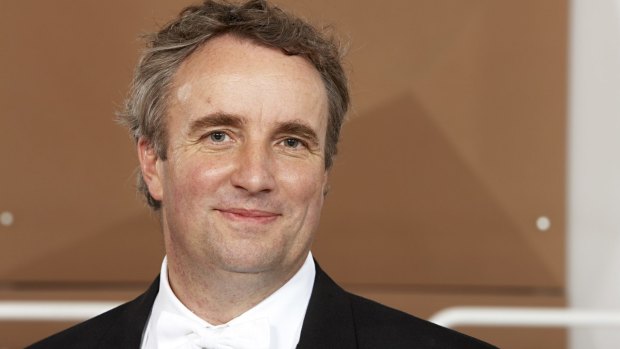By Peter McCallum
Sydney Chamber Choir
City Recital Hall, April 28
★★★
In retrospect, 1707 was an astonishing year in the history of western music. Yet, only the most astute and well-travelled observer of the time would have noticed that a 22-year-old organist in Arnstadt called Johann Sebastian Bach, and another German of the same age studying in Rome called George Frideric√ Handel were writing music of such consummate mastery and originality that musical thought would never be the same.

Visiting conductor ... Jonathan Grieves-Smith.
Saturday night's thoughtfully-programmed concert by the Sydney Chamber Choir under visiting Melbourne conductor Jonathan Grieves-Smith paid retrospective homage to the rising stars of the class of 1707 by pairing Bach's masterpiece of subtly integrated counterpoint, the cantata Christ Lag in Todesbanden, with Handel's brilliantly vivid Dixit Dominus, along with contemporary works by Latvian composer Peteris Vasks and Australian Iain Grandage.
Though Bach and Handel differed fundamentally in musical orientation, the former inward and liturgical, the latter public and theatrical, the two pieces shared a common purpose in using music to depict narrative.
The Sydney Chamber Choir sang the gloriously intricate polyphony of the opening choral movement with balanced cohesiveness, although Grieves-Smith's tempi in the Bach seemed a little laboured and drawn out at times.
Allotting the solo movements in the middle to choral groups rather than solo singers created a cohesive choral tone. Highlights in the Handel included the splendid choral sound of Juravit Dominus.
The Orchestra of the Antipodes accompanied on original instruments, and, although the exigencies of such events rarely allow sufficient time for instrumental polish, there were moments when listeners gained instructive insight into Baroque balance. The continuo cello was a little over-prominent and displayed some pitch problems.
Grandage's Why Are We Here took a poem of touching simplicity by Chris Wallace-Crabbe describing a child sitting quietly under a tree to a wedding song with overtly heart-tugging harmonies and vertiginously uplifting modulations framed by burbling birdsong sounds from choir and orchestra.
Vasks' Prayer set words by Mother Teresa of Calcutta in three verses, reaching a climax of intensity in the second where the text prays for ears to hear the suffering. Compared with the vengeance of Handel's words, the modern text showed human warmth and empathy, though the musical mastery of 1707 remained compelling.